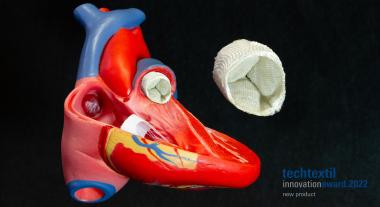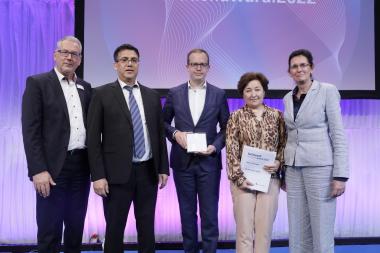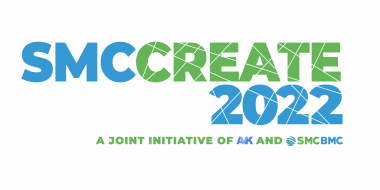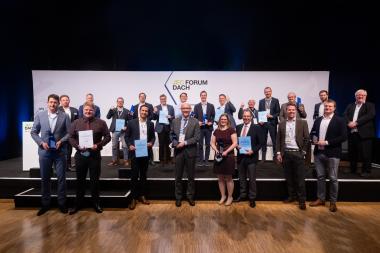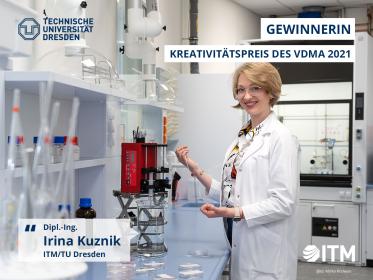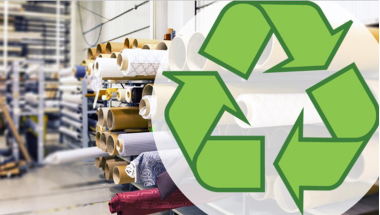ITM: Techtextil Innovation Award 2022 für neuartige textile Herzklappenprothesen
Wissenschaftler:innen vom Institut für Textilmaschinen und Textile Hochleistungswerkstofftechnik (ITM) der TU Dresden sind am 21. Juni 2022 für ihre gewebten Herzklappenimplantate mit dem Techtextil Innovation Award 2022 in der Kategorie „New Product“ ausgezeichnet worden.
Im Rahmen eines Forschungsprojektes der Industriellen Gemeinschaftsforschung (IGF) entwickelten Wissenschaftler:innen des ITM neuartige textile Herzklappenprothesen. Die Implantate können exakt an die anatomische Form angepasst und minimalinvasiv im Herz platziert werden. Die textile Herzklappe ist integral gefertigt. Hierbei erfolgt die Integration des Ventils in situ während des Webprozesses. Somit besteht die strömungstechnisch optimierte Herzklappe aus einer einzigen textilen Struktur. Weitere Fügeprozesse, z. B. durch Nähen, sind nicht mehr erforderlich. Das reduziert den Fertigungsaufwand im Gegensatz zur heutigen Herstellung biologischer Herzklappenprothesen in Handarbeit enorm.
Prof. Chokri Cherif, Institutsdirektor des ITM, freut sich mit seinem Team sehr über die kontinuierli-chen interdisziplinären Forschungserfolge, die am ITM in enger Kooperation mit technischen Webereien, Medizinern und Anwendern stetig erzielt werden. „Bereits vor zwei Jahren wurden wir mit dieser neuartigen Entwicklung als eines der drei Finalistenteams des Otto von Guericke-Preises 2020 geehrt. Die Auswahl für den Techtextil Innovation Award 2022 ist eine erneute Bestätigung für den Bedarf an unserer praxisorientierten Forschung und eine besondere Würdigung, aber gleichzeitig auch weiterer Ansporn für die zeitnahe Umsetzung unserer Forschungsergebnisse in die Industrie.“
Bislang stehen für die Behandlung defekter Herzklappen mechanische und biologische Klappen zur Verfügung. Die neuartigen gewebten Herzklappenprothesen sollen die Vorteile der beiden Typen vereinen: unbegrenzte Lebensdauer, keine lebenslange Einnahme von blutverdünnenden Medikamenten und minimal invasive Operation. Ferner können die textilen Herzklappen zeit- und kostensparend mit hoher Reproduzierbarkeit und Qualität gefertigt werden.
Institut für Textilmaschinen und Textile Hochleistungswerkstofftechnik Medizintextilien Herzklappenersatz Techtextil Innovation Award
Institut für Textilmaschinen und Textile Hochleistungswerkstofftechnik (ITM)


